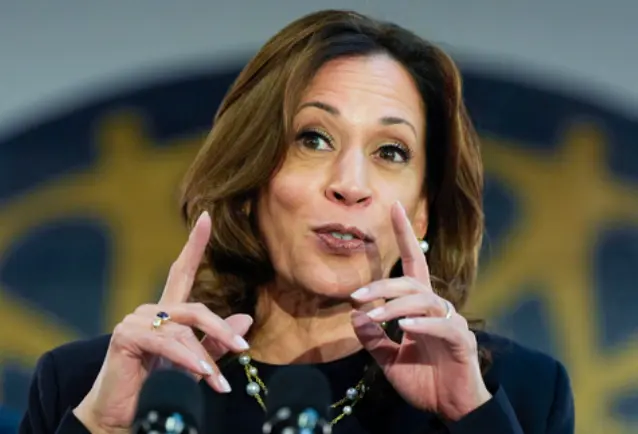Swing State Deep Dive: Arizona
Arizona is known for its otherworldly landscapes, hot summers, and an increasingly purple population. The only swing state on the U.S-Mexico border, Arizona is where candidates go to spar over the issue of immigration – an increasingly divisive, and partisan, topic in an era of contentiousness over border security and migrant policy.
Once staunchly Republican, Arizona is now led by a series of Democrat or Democrat-adjacent officials: Gov. Katie Hobbs, Sen. Mark Kelly, and Democrat-turned-independent Sen. Kyrsten Sinema. With Sinema retiring this year, Arizona will be a battleground for both the presidency and the Senate.
As things stand, Donald Trump is slightly more likely to capture the Copper State’s 11 electoral college votes: The former president is up 2.2 points against Kamala Harris in Arizona’s RCP Average. While the race has been quite close for weeks – Trafalgar and Emerson had Trump up just 1 point – the most recent NY Times/Siena College poll placed Trump with a 5-point lead over Harris.
In 2020, Joe Biden edged out Trump in Arizona by a little over 10,000 votes out of 3.3 million cast. Comparatively, 2016 saw Trump beat Hillary Clinton by a relatively comfortable 91,000 votes. Trump seems to be getting his juice back once again, due in part to immigration policy, a staple talking point of the Trump campaign and a subject of major importance to Americans living in border communities.
In the New York Times poll, 21% of Arizona respondents ranked immigration as the most important factor in their vote, trailing only the economy. That is higher than in Georgia, where 14% of respondents listed immigration (behind both the economy and abortion), and in North Carolina, where abortion and immigration were tied at 13%, behind the economy.
Asked which candidate they trusted to handle immigration, Arizonans named the former president over Harris by a 13-point margin.
Trump spoke on immigration the last time he visited Arizona on Sept. 12, just two days after his debate with Harris. He held a rally in Tucson and repeated his claims about Haitian migrants eating pets in Springfield, Ohio – wild rumors that Ohio Gov. Mike DeWine had beseeched the Trump campaign to refrain from making. Trump also continues to attack Harris on immigration, having dubbed the vice president a “failed Border Czar,” a label Harris has struggled to shake.
Early in his presidential term, Biden made Harris responsible for addressing the root causes of immigration from Latin American countries like Guatemala, Venezuela, and El Salvador. Harris struggled in the role, and avoided visiting the southern border for several months into her tenure as vice president, a failure that is being used against her in Republican advertisements to this day.
Harris is scheduled to visit the U.S.-Mexico border Friday during a trip to Arizona, although her campaign has not confirmed details on her stops. This will be her first visit to the border since Biden dropped out of the race and her first visit to Arizona since early August.
Last time Harris stumped in Arizona, she emphasized her record targeting border-related crime as California’s attorney general. “I went after the transnational gangs, the drug cartels and human traffickers,” she said, a point she has made several times before. She also sought to stake out a middle ground on immigration, saying she believes in a secure border and in providing “an earned pathway to citizenship.”
Harris’ attempts at damage control might not be enough. Republicans are making major inroads in Arizona, especially on the issue of immigration. “The Democrats have been losing ground there, and a lot of it has to do with the border,” seasoned pollster Eduardo Gamarra told The Guardian.
Felix Garcia, a Mexican-born Phoenix resident who has lived in Arizona since 2000, echoed Gamarra’s sentiment.
“We have so many people from different countries on the border every day, and Kamala has never tried to fix the situation on the border,” said Garcia, who described himself as a McCain Republican.
Gamarra and Garcia represent a key demographic in Arizona: Latino voters. Latinos make up approximately 33% of Arizona’s population, the largest share of Latino eligible voters in the country. It was this growing demographic that helped Biden become the first Democratic presidential candidate to win in Arizona since 1996, but polls suggest Harris is struggling to match Biden’s 2020 levels of Latino support.
One person benefitting from Latino support is Ruben Gallego, the Democratic candidate for Sinema’s open Senate seat. Gallego seems to be enjoying the support of a subset of split-ticket voters: Trump was up 5 points in the last Times poll, but Gallego was up a comfortable 6 points on Republican candidate Kari Lake. Those who backed both Trump and Gallego were more likely to be Latino, lower-income, and less college-educated.
Part of Gallego’s appeal might be the simple fact that he is not Lake, a close ally of Trump who denied the results of the 2022 race for governor and alienated many traditional Republicans in the process. Gallego also trends toward the middle on issues like immigration and policing, therefore appealing to some middle-of-the-road Americans. Gallego is up 4.6 points in the RCP Average.
Arizona voters are increasingly tolerant of moderate Democrats like Sinema, Kelly, and Gallego. Yet Harris, with her California background and track record of supporting progressive policies, is struggling to gain ground with the people of the Southwest, leaving a possible opening for Trump to win the rubber match in Arizona.
2024 State Races
Get caught up on the most important polling for the most consequential races of 2024.

